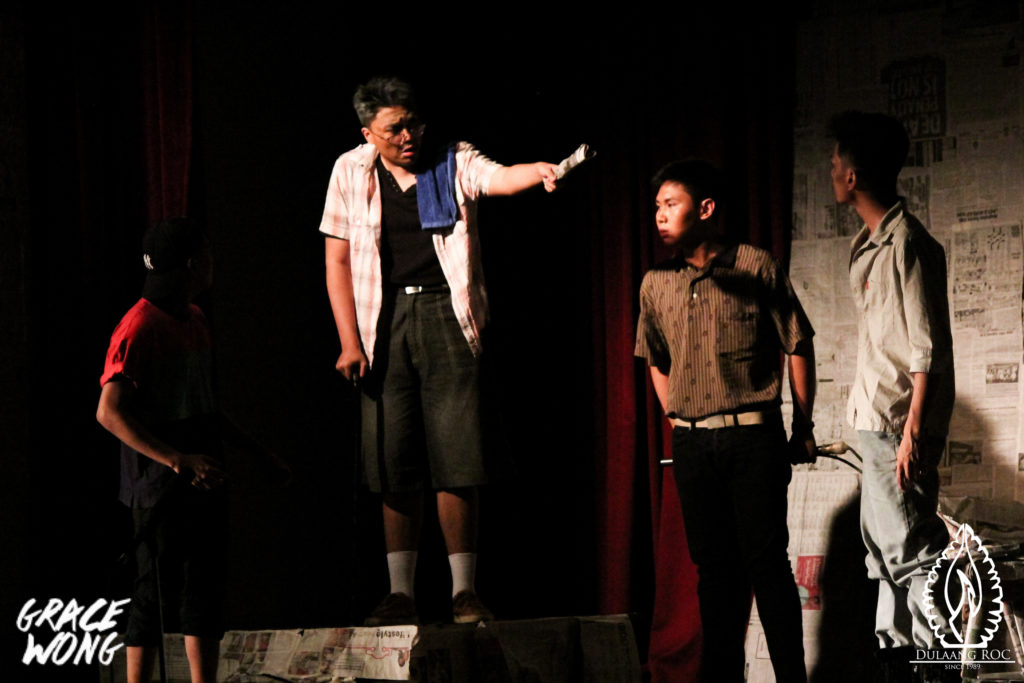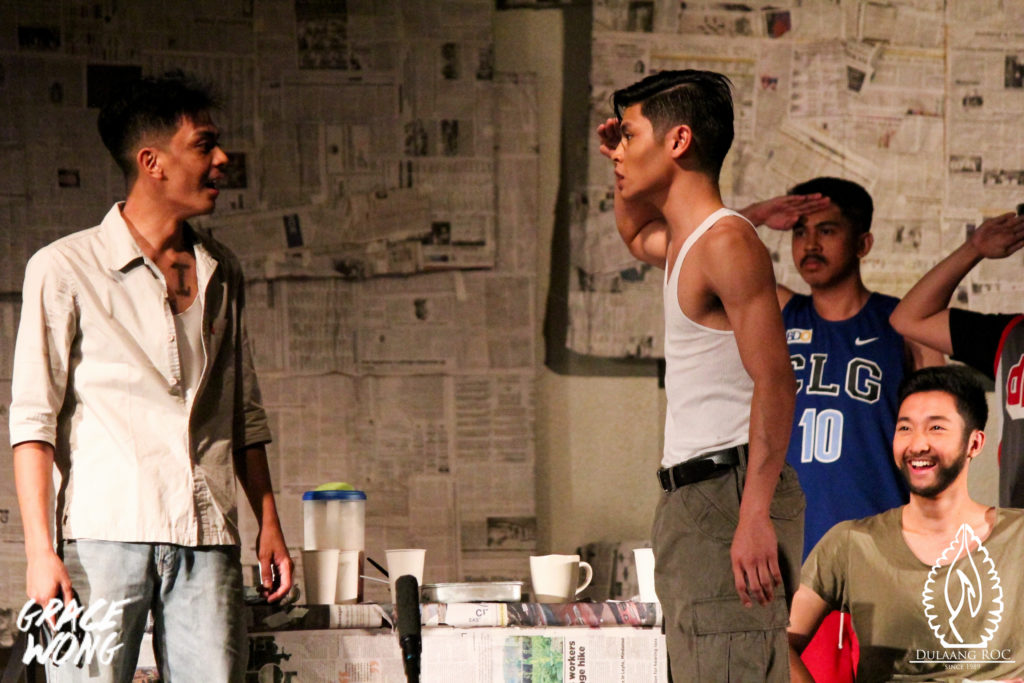“Mapapaslang nga ba ang katotohanan o patuloy ka nitong hahabulin?”
Dulaang ROC’s major production entitled Sa Kanto ng Wakas at Katotohanan Extension written by Ruel Aguila and directed by Kino Kwan perfectly captures and addresses the different issues on truth.
The story takes place in the corner of Wakas Street and Katotohanan Extension, in a small, lower middle-class community in a fictional Manila. It follows the story of Major Rodolfo Guzman, nicknamed Ompong, who returns after being granted presidential pardon and serving 25 years in jail for the murder of a high-profile politician. He wants to make up for all those lost years with his family: his eldest son Roger, his daughter Tanya, and his “granddaughter” Richelle. His sudden return changes things up for an old friend of his and for the barangay officials as well, aptly named Chairman and Kagawad, two rivalling factions.
Each one has his secrets and is running away from the truth, but the biggest secret is Ompong’s: it was not he who murdered the politician, but he knows who did. The play follows Ompong, his prospect of escaping from the truth, from the 25 years he spent and suffered in jail, of starting a new, quiet life. Until when can secrets indeed remain secrets?
Worthy of note is the actors’ consummate internalization of their roles. It is not a student you see up there on stage; you see the character itself in the flesh.
Amiel Maranan impressively takes the lead as Ompong. The fourth-year student turns into a 65-year-old Major Guzman onstage, consistent in character from start to finish. As you watch the play and as his story unfolds, you see and feel the anguish and pain of his desire to start a new life.

Jed Lirios plays Loloy, an old friend of Ompong, and one of the villains of the play. Jed gives a smooth performance transforming from a believable “good friend” to a villain. He perfectly embodies his character as just an old friend, relishing his times together with Ompong in the past, a friend whom Ompong could rely on. One of the highlights of his portrayal is his monologue when he finally reveals his true intentions, as well as some secrets of his own.
Patty Villacorta and Lystra Barraquias alternately play the role of Tanya. Seeing two versions of the same character on stage is fascinating; each actress brought out a different aspect of the character. Patty delivers the more mature rendition of the character, but does not lose the emotions needed in her heated exchanges of frustrations with her brother Roger. The highlight of Patty’s performance is her versatility with emotions, going from highs to lows, all without losing her character. Lystra turns in a younger take on the character. The highlight of her performance is her voice—modulated and full of emotion—coupled with her effective use of body language. Overall, they both are able to deliver a memorable performance to audience members.

Troy Jose and Gabriel Alaurin alternate playing Roger. Between the two, Troy gives the stronger performance, with more emotions put into play, especially in his scenes with Amiel. You also see him interacting with other characters in the scene.
Arantxa Domingo (Dulaang ROC’s only 6YP member) plays the role of Richelle. In the original script, the character is a boy named Richard. Thus, all were excited to see Arantxa’s take on the character. She has no alternates for the role, and throughout all shows, she delivers a remarkably consistent performance: a twelve-year-old girl who is set to graduate as her batch’s valedictorian, naïve, innocent, and clueless as to what is going on. There is a certain charm about her that goes hand in hand with her character. Her smile and her charisma on stage bring the character to life.
Among the supporting cast, Christnel Sawali, who plays Bossing, stands out. Bossing, the leader of one of the two rival factions, is one of the stronger personalities that give color to the black-and-white world of Sa Kanto ng Wakas at Katotohanan Extension. Christnel is a natural at playing a character who is tough, boyish, feisty, and savage.
The set is minimalist; characters move around the props to effectively change the set even while delivering their lines. The most prominent detail of the set is the use of newspaper. Everything—the props and the set—is wrapped in newspaper. The Dizon Auditorium is not spared. Newspaper is used as a symbolism for truth: it carries the “truth” and can be used to cover up the truth. The lights were also effectively used to separate areas on stage.
Overall, Dulaang ROC delivers a hard-hitting message with their take on Sir Ruel Aguila’s work. What exactly is truth? How many times do we try to cover up the truth or present our own version of it? Secrets destroy relationships, so it is better to be open and tell the truth. After all, the truth sets us free. Should Dulaang ROC wish to restage this in the future, give it a go and see for yourselves all the many
Leave a Reply